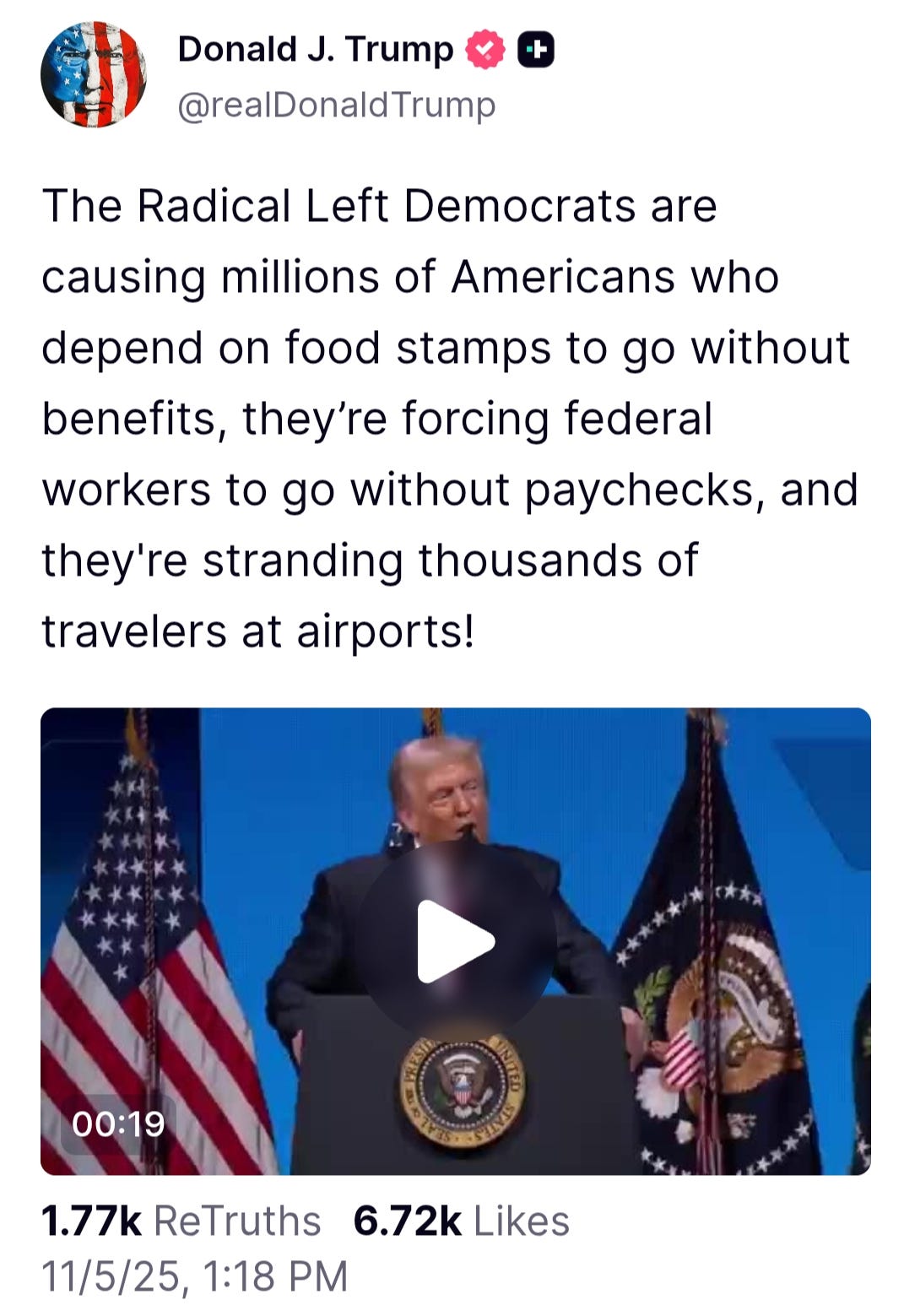SNAP Judgment - Part 3
The SNAP crisis isn't over until the crisis is over. It's still a battle in the courts.
During the last episode, Donald Trump said that SNAP benefits would not be restored until the government shutdown ended, even though the court told him that the benefits had to be restored from the emergency fund. The administration and Trump responded that they needed guidance from the courts as to how to do the restoration of the benefits. Just another delay tactic. Then Trump posted that he wasn't going to do it at all.
White House spokesperson Karoline Leavitt said after Trump's post, that she had just talked with Trump, and the benefits were going to be restored. Then, the story was that they could only do half the benefits. Trump, of course then blamed the whole problem on the Democrats.
Next, Rhode Island District Court Judge Jack McConnell ordered the administration to pay the SNAP benefits in full. The administration asked a federal court of appeals to block that order. They followed that up with the 1st Circuit Court of Appeals to allow it to pay 65% of the benefits from the contingency fund. The Friday filing said that the only way to get full benefits was by congressional action.
Judge McConnell wrote, ”While the President of the United States professes a commitment to helping those it serves, the government's actions tell a different story.”
In the Friday filing, government lawyers wrote, “… a single district judge has devised his own solution: ordering USDA to cover the SNAP shortfall by transferring billions of dollars that were appropriated for different, equally critical food Security Programs — and to do so within just one business day (i.e. by today).” The Section 32 funds mentioned are from a USDA program to buy surpluses from farmers and sends them to food banks and other food assistance programs, and also for Child Nutrition programs.
Agriculture Secretary Brooke Rollins said the partial funds had been distributed to the States on Monday. Since the states oversee the process of loading payments onto electronic benefit cards, the Trump administration has argued that it has done its part by authorizing SNAP funding and giving states information on how to calculate partial benefits for households.
As the fight goes on in the background in the courts, several states are reporting that their EBT users have received the full amount for November, including California, which needed $1.1 billion to do that. Their case was part of the case in Rhode Island. Other states loading benefit cards to the full amount are Oregon, Michigan and Wisconsin. It is unclear how they are doing this if they have only received 65% of the funds needed.
The government lawyers said, “This unprecedented injunction makes a mockery of the separation of powers. Courts hold neither the power to appropriate nor the power to spend. Courts are charged with enforcing the law, but the law is explicit that SNAP benefits are subject to available appropriations.”
The plaintiffs in the case include a group of cities, charitable and faith-based non-profit groups, unions, and business organizations. Their lawyers’ response said that the administration’s rationale for not tapping into funds from Child Nutrition programs is “facially implausible.” Those programs have “$23 billion on hand and require only $3 billion per month to operate. Tapping Child Nutrition funds poses no realistic threat of leaving those programs underfunded.”
This complicated mess all started with the government saying that there were no funds available for any purpose for SNAP benefits because of the government shutdown. Everyone knew of the emergency snap fund, but the administration tried to say that these circumstances weren't ones that allowed it to be used.
Judge McConnell gave the government until the end of the business day on Friday to distribute the SNAP benefits in full, while the government is asking the appeals court to stay the order by 4:00 p.m.
This is the first time in the program's history that benefits have been delayed. Not in all the government shutdowns that have happened in the program's existence have the distribution of the benefits stopped or been delayed. It's very confusing as to who are getting benefits already, and who are not. Even worse, is the government case to stop being made to distribute the benefits in full. It's so simple to add in the Section 32 funds, but the government's idea is to create as much pain as possible, and they're doing it.




